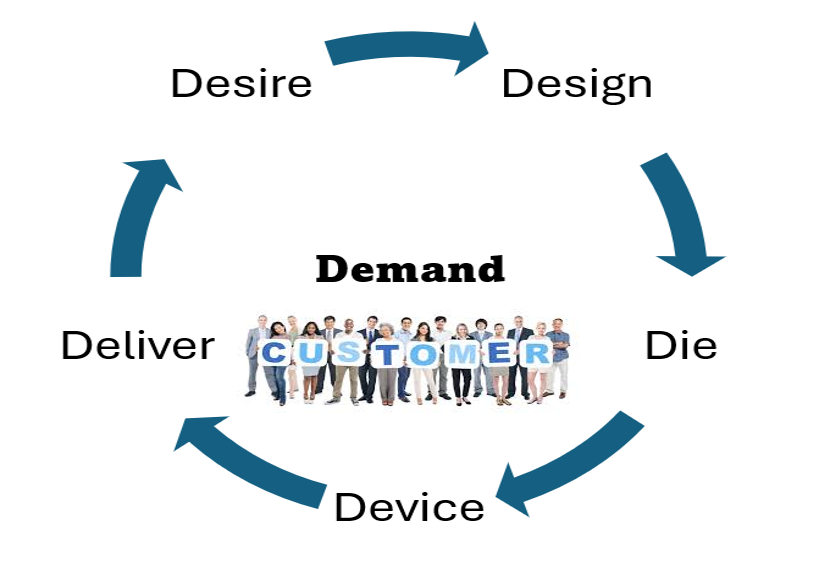The 5Ds of Industry Transformation: Aligning Innovation with a Responsive Government
In a bold move toward self-reliance, the Indian government has approved the Electronics Component Manufacturing Scheme, allocating Rs. 22,919 crore to build a robust electronics ecosystem. With investments expected to reach Rs. 59,350 crore, this presents an unprecedented opportunity for industries to capitalize on policy momentum and align their innovation strategies for market leadership.
However, industry cannot afford to be passive. To truly leverage this government responsiveness, businesses must innovate across the D-Cycle: Desire, Design, Die, Device, and Demand. This structured approach ensures that industry not only responds to government incentives but actively shapes the future of consumer needs and technological evolution.

1. Desire: Shaping Consumer Roadmaps
The industry must begin with a demand-satiation strategy that anticipates and cultivates consumer desire. Rather than merely reacting to market trends, businesses should actively shape future needs through strategic research and foresight. This means understanding deep-rooted aspirations—whether in AI-powered automation, energy-efficient electronics, or immersive digital experiences.
2. Design: Engineering for Scale and Sustainability
Once consumer desires are mapped, the next step is to design scalable and sustainable solutions. This requires an ecosystem approach—fostering collaboration between startups, manufacturers, and academia to create modular, upgradable, and repairable product designs. With the government’s push for increased Domestic Value Addition (DVA), companies should also prioritize local sourcing and advanced manufacturing techniques.
3. Die: Rethinking India strategies for trusted semiconductors
World Economic Order is going through a hard reset. A new era geo-politics is redefining the supply-chains; new cyber-threats are undermining the unprepared economies. India needs to develop its trusted sources for semiconductor dies. Design should integrate and build India trusted security in our applications and devices that serve those applications.
4. Device: Delivering High-Impact Solutions
At the core of transformation is the Device—the tangible manifestation of innovation. Companies must ensure that devices are not just market-ready but globally competitive and trusted. With schemes supporting high-value sub-assemblies like display modules, Li-ion cells, and high-density interconnect PCBs, businesses have a clear roadmap to elevate product quality and manufacturing capabilities.
5. Demand: Closing the Innovation Loop
Finally, no innovation strategy is complete without ensuring sustained market demand. This involves not just marketing but ecosystem building—partnering with logistics, distribution networks, and after-sales services. As the government provides incentives linked to employment generation, industry should align job creation with skill development, ensuring a steady supply of talent for long-term competitiveness.
The Road Ahead: An Industry-Government Synergy
The government’s commitment to making India a hub for electronics manufacturing is evident. However, the onus is now on the industry to drive adoption, enhance capabilities, and forge global partnerships. By integrating the 5Ds—Desire, Design, Die, Device, and Demand—businesses can move beyond mere compliance with government schemes to actively shaping the future of innovation and economic growth.
The industry must not just respond to government initiatives but co-create the future with them. The time to DELIVER is now!








